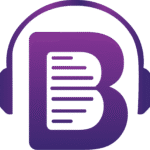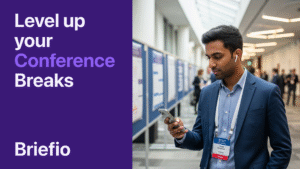So, how do you make the most of it? Let’s dive in.
1. The Big Picture: Sensing the Scientific Pulse
One of the primary benefits of attending a conference, even without presenting, is to gauge the current trends and hot topics in your field. What are researchers focusing on? What methodologies are gaining traction? What new challenges are emerging? This bird’s-eye view is invaluable for shaping your own research direction and staying ahead of the curve.
2. Planning Ahead: Your Conference Foundation
- Early Bird Catches the Discount: Seriously, don’t miss those early bird registration discounts. They can save you a significant amount of money. Set a reminder in your calendar!
- Secure Your Roost: Conferences, especially large ones, can make hotel rooms scarce and expensive. Book your accommodation well in advance. Consider options slightly outside the immediate conference venue if prices are prohibitive, but factor in travel time.
3. Navigating the Program: Your Personalized Scientific Journey
The scientific program can be overwhelming, but it’s your roadmap to discovery.
- Strategic Scanning: Don’t just randomly browse. Scan the program for areas and topics that genuinely interest you. Look for keywords related to your research, or even areas you’re curious to learn more about.
- Familiar Faces & Influential Voices: Keep an eye out for authors you know or whose papers you’ve read. This is a great way to put a face to a name and potentially gain deeper insights into their work.
- The Art of Prioritization (and Collaboration): For larger conferences with multiple parallel sessions, time overlaps are inevitable. You’ll need to prioritize. If you’re attending with a friend or colleague, consider “splitting up” to cover more ground and share notes later.
- Craft Your Schedule: Once you’ve identified sessions and presentations, create a personalized schedule. While it’s tempting to hop between talks, I often find it more beneficial to stay for an entire session. This allows for a more cohesive understanding of a topic and often includes Q&A that can be highly illuminating.
4. The Illuminating Insights: Keynotes and Controversies
- Keynote Wisdom: These are often the highlights of a conference. Keynote speakers are usually super famous experts in their field, and their talks tend to be more general, offering a broader perspective on a topic. This is an excellent opportunity to learn the basics, understand foundational concepts, and get a feel for overarching trends from the very best.
- Embrace the Debate: Controversial Sessions: If your conference offers them, controversial sessions are a must-attend! I absolutely enjoy them because they often feature a real, live debate. You’ll witness different opinions, hear compelling arguments, and gain a nuanced understanding of complex issues. Plus, they can be incredibly engaging and even fun!
5. Fueling Your Body and Mind: Luncheons and Industry Symposia
- Free Lunch (and Learning): Luncheons and industry-sponsored symposia are a practical win – you often get free food! While the quality of the lunch can vary, the scientific content can be surprisingly good.
- Industry Insights: Companies usually curate topics that align with their strategy, but the presenters are typically scientists who deliver scientifically accurate and often neutral information. These sessions can provide valuable overviews, introduce new technologies, or highlight practical applications of research.
6. The Power of Personal Connection: Poster Sessions
- Engage and Discover: Poster sessions are fantastic! This is where you can have direct, engaging conversations with authors. Most authors are genuinely happy to discuss their work in detail rather than just standing by their poster.
- Junior Expertise: You’ll often find young, junior researchers presenting posters. They are often the most hands-on experts on their specific topic and can answer very granular questions.
- Shared Challenges & Solutions: Don’t be shy! If you find a poster with a similar experimental setup or research question to your own, strike up a conversation. You might discover shared learnings, troubleshoot common problems, or even spark new collaborative ideas.
7. Leveraging Conference Apps: Your Digital Companion
In recent years, conference apps have become an indispensable tool for attendees. While some might have had a clunky start, they’ve evolved significantly and are getting better with each passing year.
- Digital Program & Schedule Management: Most apps provide the entire scientific program digitally. This means no more fumbling with thick paper booklets! You can easily browse sessions, read abstracts, and build your personalized schedule right on your phone or tablet. Many allow you to bookmark favorite sessions and even send reminders before they begin.
- Real-time Updates: A huge advantage is the ability to receive real-time updates on schedule changes, room alterations, or important announcements via push notifications. This ensures you’re always in the loop.
- Enhanced Information: Beyond the schedule, apps often include speaker bios, venue maps, exhibitor lists, and practical information like Wi-Fi details.
- Networking Opportunities: This is where modern conference apps truly shine. Many now feature attendee directories, allowing you to search for other participants by name, affiliation, or research interest. Some even offer matchmaking features based on your profile and interests, suggesting people you might want to connect with. Look for features like:
- In-app messaging: A convenient way to reach out to other attendees you’d like to meet or continue a conversation with.
- Digital business card exchange: Often via QR codes, making it seamless to share contact information.
- Community boards or social feeds: A place to post questions, share insights, or engage in discussions with the wider conference community.
- Meeting schedulers: Some apps allow you to propose and schedule 1:1 meetings directly with other attendees or even exhibitors.
While the user experience can vary, it’s worth taking the time to explore the conference app as soon as it’s available. It can truly revolutionize how you organize your time and facilitate networking.
8. Beyond the Formal Sessions: Networking & Beyond
- Networking Receptions: While I personally don’t attend these as often, networking sessions and receptions are excellent for those who have been in the field for longer. They offer a relaxed environment to casually connect with colleagues, potential collaborators, and industry representatives over light snacks.
- Dinner Opportunities: Many attendees head out for dinners afterward, either with industry contacts or fellow colleagues. This is where more in-depth discussions and connections can happen.
- The Unofficial Hallway Track: Don’t underestimate the power of the “hallway track” – those informal conversations that happen between sessions, during coffee breaks, or while waiting in line. You never know who you’ll meet or what valuable insights you’ll gain from a casual chat.
- Follow Up: If you make a good connection, follow up with an email or LinkedIn request after the conference. A brief message reminding them of your conversation can solidify the connection.
Attending a scientific conference as a non-presenter isn’t about being a passive consumer of information. It’s about being an active participant, a curious learner, and a strategic networker. By planning ahead, engaging thoughtfully with the program, leveraging the powerful features of conference apps, and embracing the diverse opportunities available, you can transform your conference experience into a powerful catalyst for your own scientific growth. Enjoy the journey of discovery!





